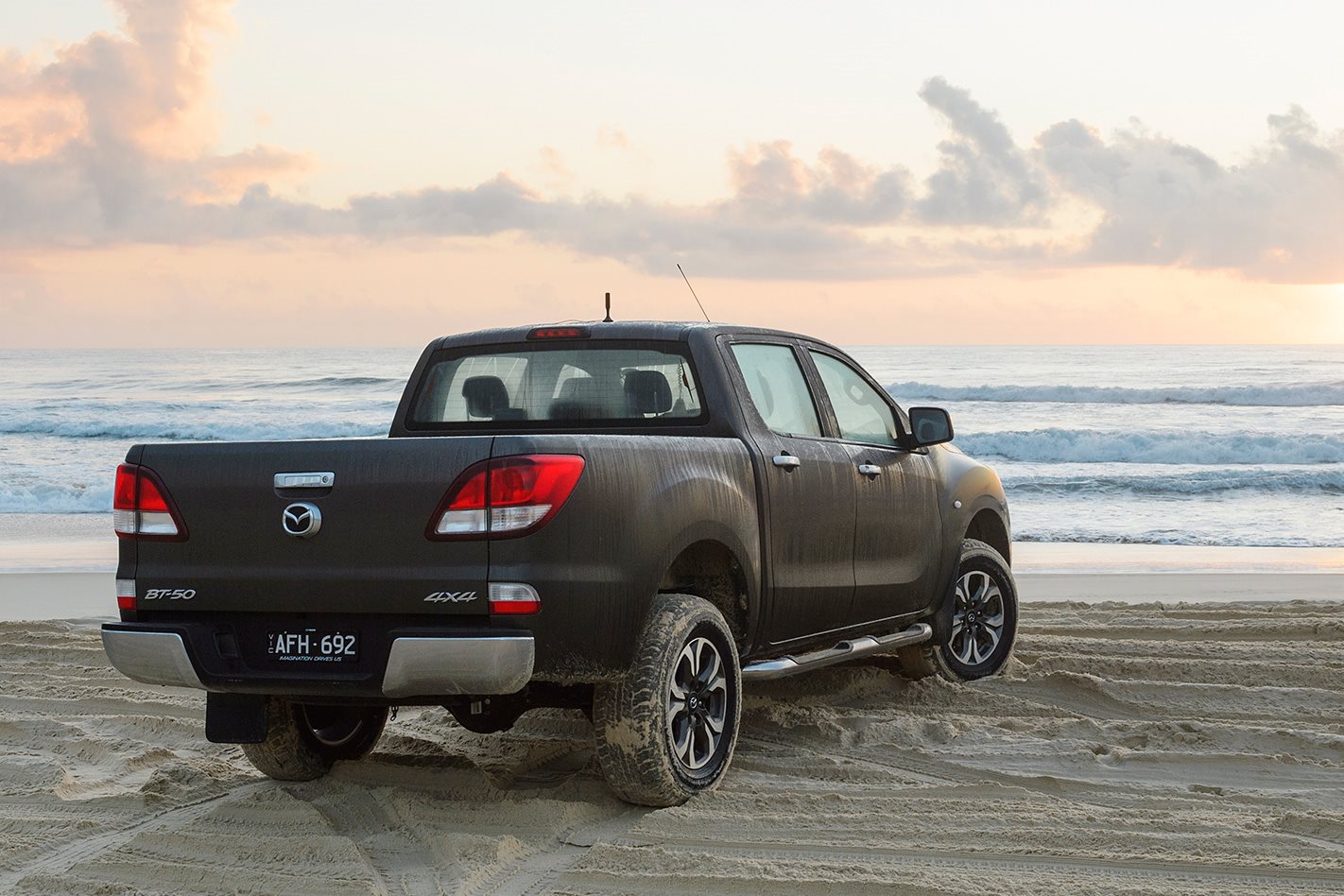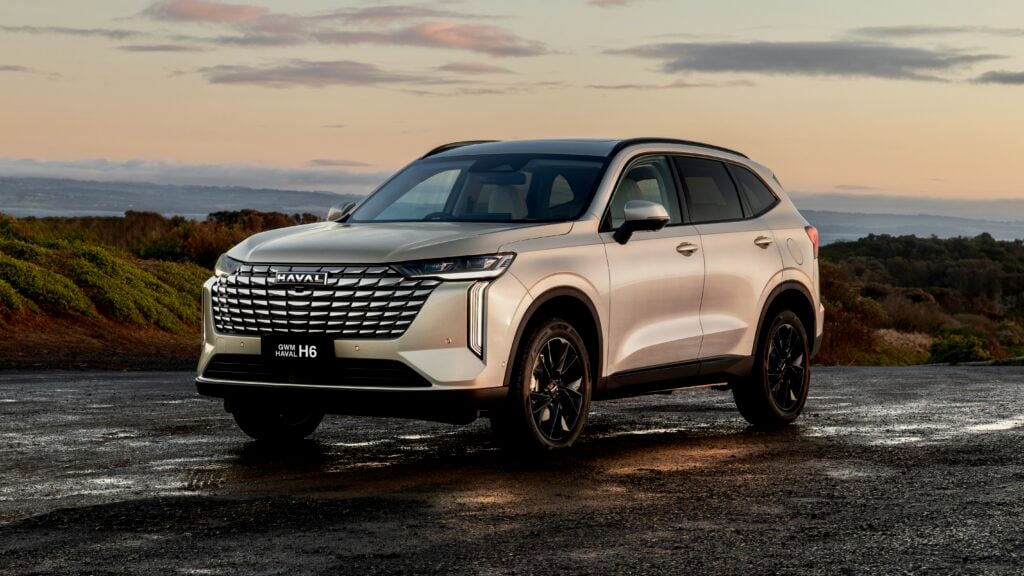Our intrepid explorer survives dingoes, sand driving, and a night in a sleeping bag on Fraser Island, and develops a crush on Mazda’s BT-50 ute.
It turns out there is something worse than sleeping in a tent, and that Banjo Patterson was a liar.
To be fair, the old poet’s Swagman may have been jollier than me because he slept in an old-school swag, which was basically just a rolled up dirty blanket. The modern version of this iconic form of bedding is more like a cross between a tent and a sarcophagus and was clearly invented by a total bastard.
While vampires would probably find it quite comfortable, I can’t imagine how any human being does, unless their personal fantasy is being buried alive, in a sleeping bag. I managed just one sleepless night of swagging under the stars on Fraser Island during our extended, extensive test of the new Mazda BT-50, which is one night more than I wanted.
The original plan was to torture me for six days and nights by sending me on a trip that would combine two of the things I love least in the word: camping and off-roading. But I am nothing if not an annoying whinger and I soon managed to talk the trip down to a mere four days – with three of those nights spent in the island’s far more salubrious resorts.
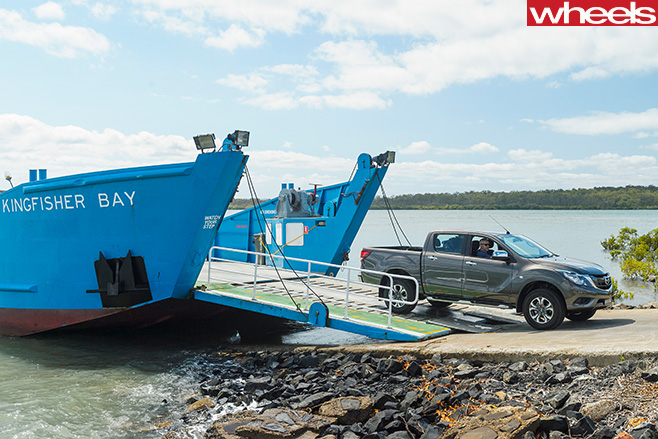
The problem with Fraser, famously the world’s largest sand island and every inch of which is World Heritage Listed (Queensland is also home to the second and third place getters on the list), is that you can’t navigate it without a proper four-wheel drive. In fact, you’re not even allowed to try, although we did see one guy in a Hyundai Santa Fe and a few in German faux SUVs, so there’s obviously some wriggle room.
The guide we’d chosen – local expert Dave Darmody, who runs the Australian Offroad Academy (when he’s not doing his full-time job as a primary school teacher) – was determined to show us the roughest and toughest bits of the island, of course, and seemed like he’d be greatly disappointed if I didn’t get bogged at least once.
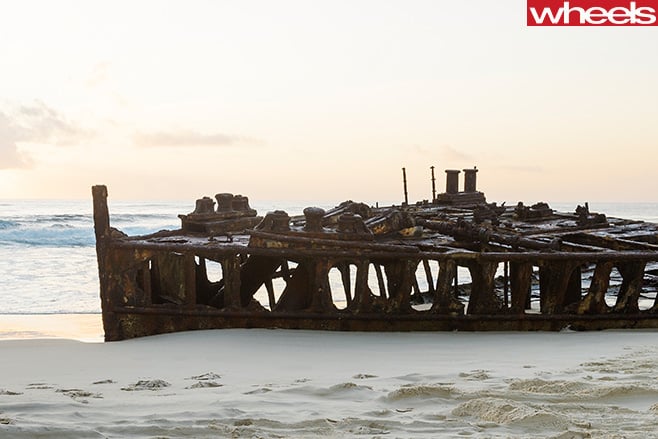
“People will tell you it’s all about momentum, but that’s just stupid. Momentum is what you use when you’ve run out of skill,” Dave explained.
“When you think about it, you need to give the suspension time to breathe, so you don’t rush it. If you just keep putting your foot in, you’re only going to dig a bigger hole.” The real trick, I now understand, is getting your tyre pressures right, particularly when it comes to driving on sand.
On our drive up to the island, from Brisbane via Hervey Bay, the agricultural barking and braying of the BT-50’s 3.2-litre diesel was a wearing companion and its ride quality, in particular, made me wonder how and why so many people choose this kind of vehicle.
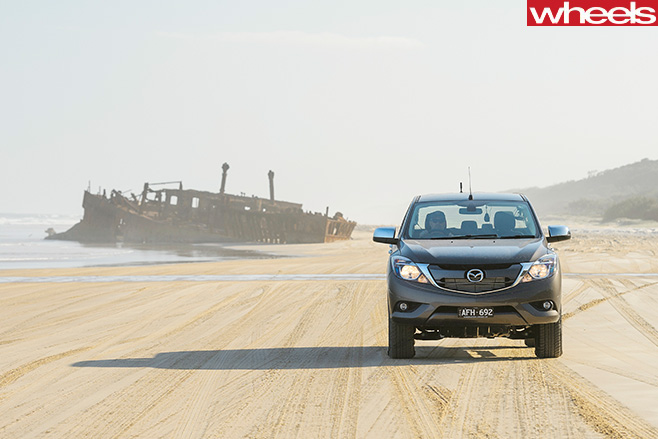
It takes less than five minutes on our off-road, ute-bashing training course to see the advantage of this kind of vehicle, if you’re actually going to tackle some rough stuff.
With much of the air released from our tyres, we’re told to turn the traction control off, because it measures wheel rotation and will react badly to semi-flatness. Switch the BT-50 into low range, however, and it automatically turns on the special off-road traction system, which is a work of electronic genius.
Dave describes the Mazda system – he has a BT-50 of his own, with 100,000 hard yakka kilometres on it – as class leading, and it’s easy to see why.
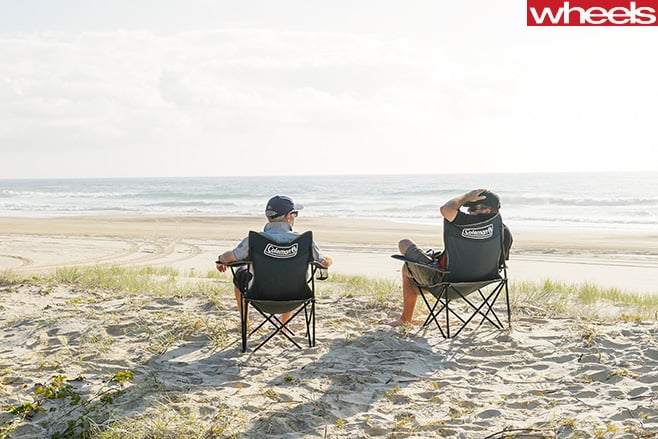
Only one stupidly steep hill managed to beat me, forcing a tail-first retreat, but what shocked me even more than that was how much I was enjoying myself.
The diesel’s 147kW and 470Nm is best described as “enough” for road driving, but all that torque really comes in handy for rough roading.
Our first proper adventure was the steepest descent on Fraser and the potential for disastrous digging-in seemed vast, but with my new-found skills, or at least my confidence in the Mazda’s abilities, we made it down without requiring rescue.

What’s fabulous about Fraser Island is that it combines this kind of traditional torture testing with a beach that’s a solid 100km in length, at least 80m wide and entirely legal to drive on. The speed limit is 80km/h, which feels like fairly flying, and there’s something genuinely joyous about it.
Sandstone cliffs of pink and yellow hues sweep past on one side, while a stunning blue ocean flashes against the white sand on the other. Streaming past you are other four-wheel drivers with huge smiles on their faces and, incredibly, lots of light planes, which land on various airstrips of sand along the way. That gives you some idea of how vast this coastline is, but it really needs to be seen to be believed.
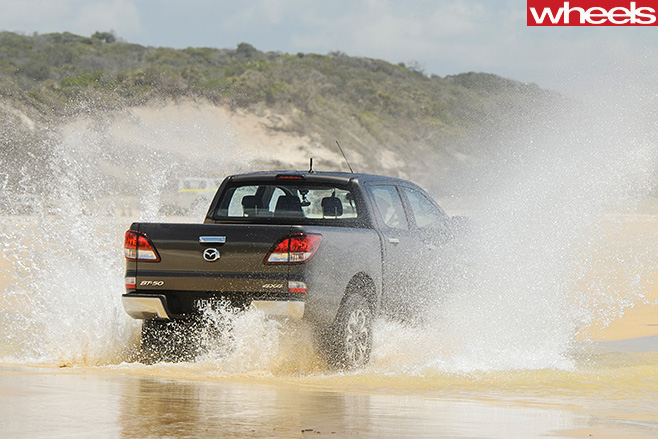
You really could beach drive all day, but then you’d miss out on some of the amazing places to stop, like Eli Creek. This fresh water rivulet ebbs and flows to the point of being un-crossable at high tide, which is fine, because it’s a great place to get marooned. Taking a walk up the waist-deep waterway is like wading into a mini Amazon – minus the piranhas – with impossibly ice-blue water contrasting with white sand, overhanging trees and wild flowers. Visitors spend the whole day floating along its length on inflated inner tubes, looking totally blissed out.
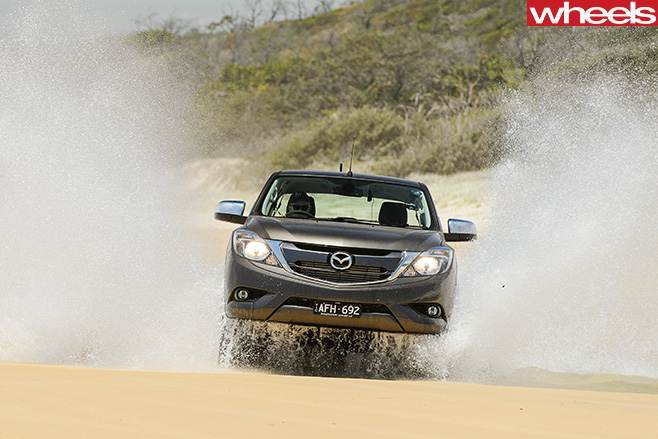
Another Aussie icon of criminality comes to mind later that night as two magnificent, and unexpectedly large, golden dingoes come literally sniffing around our feet in the moonlight. While our photographer freezes in fright and refuses to grab his camera to get a shot out of them, I’m in awe of how powerful they look, and find myself quietly apologising to Lindy Chamberlain for ever doubting her entirely likely story.
You might have heard that the dingoes on Fraser have been going feral and attacking people, but Dave points out that the very few children who’ve been attacked were doing clever things like throwing rocks at them and being further than was wise from their larger and more intimidating parents.

There are plenty of warning signs on Fraser about being dingo safe, but most of them come under the classic heading of “common sense”. The fact that jogging has been banned on the island seems like simply a wise idea in general, dingoes or no.
After a hellish night of howling (mine, not the dingoes), we set off to explore the Maheno, a fascinating and fiercely beautiful ship wreck, conveniently parked right on the edge of the beach. She was once an ocean liner, launched in 1905 and all glittering steel – weighing 5000 tonnes and measuring over 400 feet – but she ran out of steam, as it were, and while being towed from her New Zealand home to Japan for scrapping, a storm broke the tow cable and she was marooned here in a sandy paradise. The Maheno has been a tourist attraction ever since, although there was a lot more of her to see before World War II, when the RAAF decided she’d make an excellent bombing-practice target.
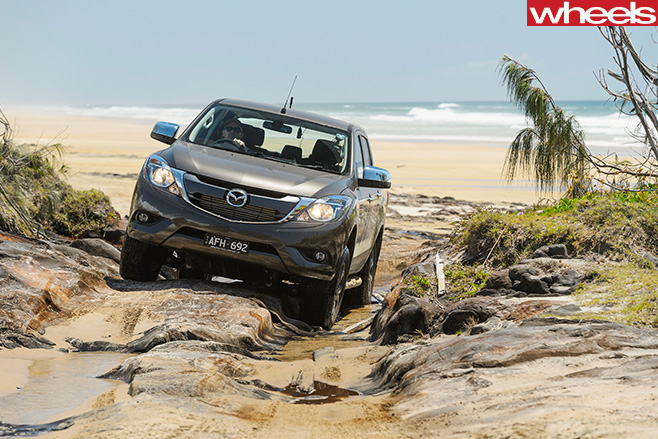
There’s more to see inland as well, like the absurdly lovely Lake McKenzie, which is what’s known as a perched lake. Basically, a hard base has formed, surrounded by sand so white it looks like icing, and it is filled only by rain water, rather than rivers. Nothing gets in, and nothing leaks out, meaning the lake is so pure that almost nothing can live in it, and so clean you can use it to clean your jewellery. The whole thing looks and feels like an illusion, a creation of imagineering by some post-card company.

After a night of swag torture, however, nothing is as picturesque as the pool at the Kingfisher Bay Resort, a surprisingly affordable and down to earth escape from all those who insist on roughing it and living like animals every night of their holidays.
On our last day we pump our tyres back up and return to a world where the BT-50 makes less sense, but where life seems a little less fantastical as well.
The macho Mazda is certainly a car I’ll keep warm memories of, because it showed me that going bush in a car – as counter-intuitive as it is – can be truly great fun. Just don’t pack a swag.

